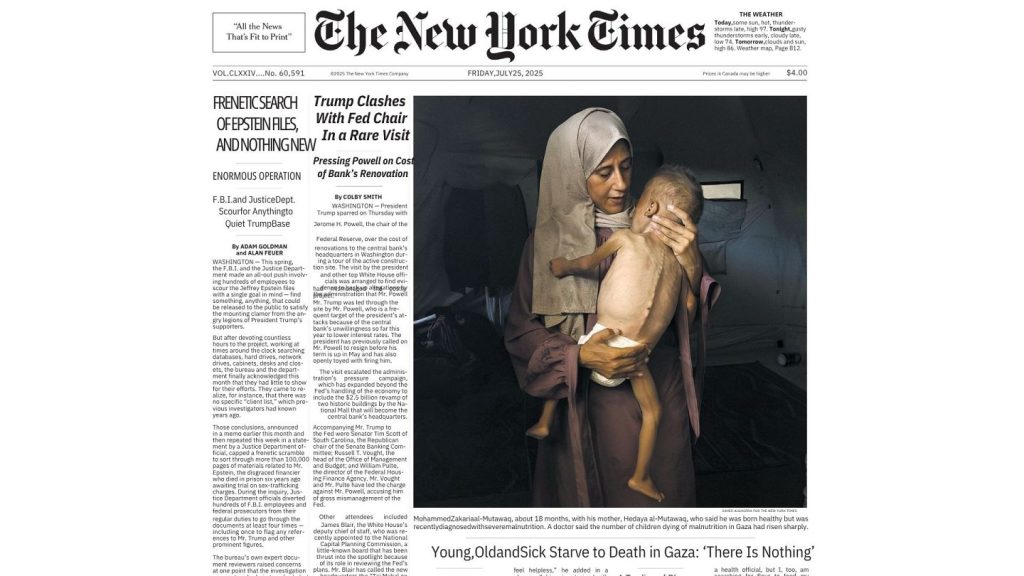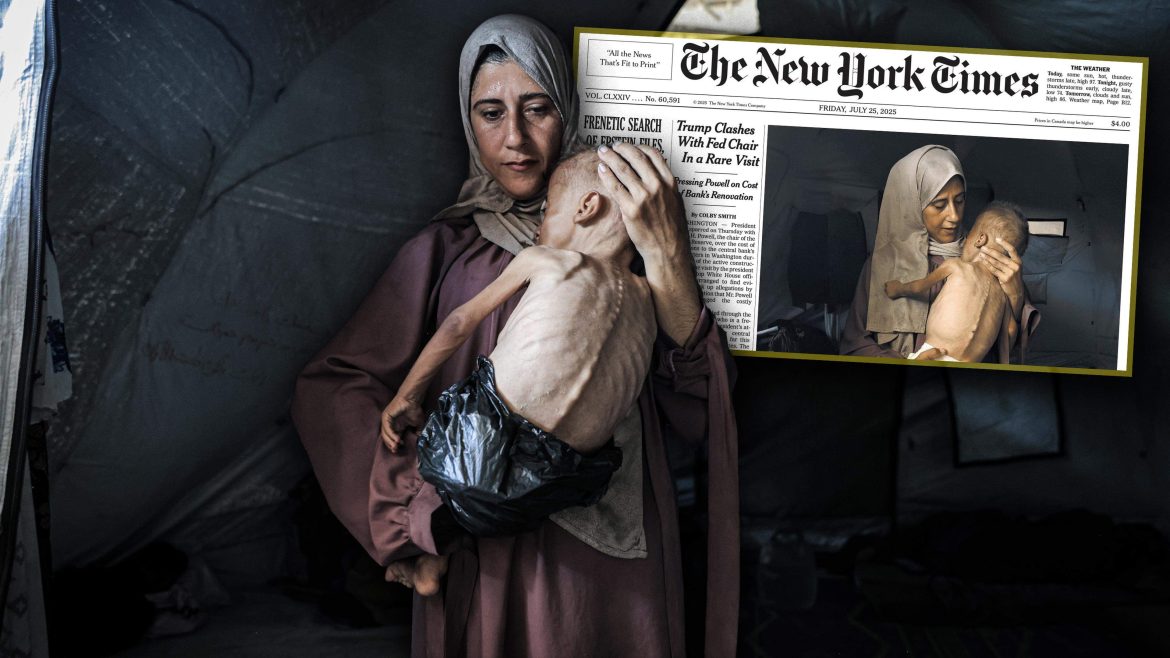The New York Times raised global awareness about famine in Gaza—but also drew backlash from Israel over an image that critics say misrepresented reality.
NYT Post on X Provokes Israeli Outrage
A post by The New York Times on the social media platform X has triggered strong criticism from Israel. In the post, the American newspaper admitted that it had published an image of a sick child in an article about famine in Gaza, without clarifying whether the child was suffering from a chronic condition unrelated to the current humanitarian crisis.
Image Widely Shared, Raises Concerns
The photo, which circulated widely online, drew sharp reactions, with some accusing the paper of misrepresenting the situation on the ground. The NYT wrote in its note: “We’ve added an editor’s note to a report about Mohammed Zakaria al-Mutawaq, a child from Gaza who was diagnosed with severe malnutrition. After publication, the Times learned that the child also had pre-existing health issues.”
In another statement, the newspaper added: “After the article was published, The New York Times was informed by the boy’s doctor that Mohammed had other health complications as well.”
A Haunting Image with Global Impact
The image shows 18-month-old Mohammed Zakaria al-Mutawaq in his mother’s arms. He appeared extremely thin—his spine clearly visible, and his arms and legs thinner than the width of a closed fist.
This photo appeared on the front page of the Friday edition of The New York Times, aiming to raise awareness of the risks of famine in Gaza, which the United Nations has strongly condemned. According to the article, the child was suffering from acute malnutrition.
Reactions from Israeli Officials
Despite the American paper’s clarification, the image provoked anger from former Israeli Prime Minister Naftali Bennett. On his X account, he wrote: “After this horrific image sparked a wave of hatred against Israel, The New York Times now quietly admits the child had pre-existing health conditions.”
Israel’s Ministry of Foreign Affairs also condemned the coverage, stating: “A major lie has been spread. A child’s illness has been turned into propaganda. This is not journalism. This is a blood libel.”
NYT Defends Its Journalists in Gaza
Nevertheless, The New York Times expressed appreciation for the work of its reporters and photographers who cover the war from Gaza “with courage and sensitivity.” In a statement, the paper said: “They risk their lives to help readers see the consequences of war up close.”

Social Media Users: “Famine Is Real”
Users on social media pointed out: “Famine is indeed occurring in Gaza,” where war between Hamas and Israel has been ongoing since the October 7 attack.
Humanitarian Access Blocked and Limited
In early March, the Israeli military halted food aid deliveries, claiming they were being looted by “terrorists.” In May, limited access to food was permitted.
A report from the Integrated Food Security Phase Classification (IPC), a tool used by NGOs to assess food security, warned that: “The worst-case famine scenario in the Gaza Strip is imminent.”
Official Denials and International Disagreements
Even so, Israeli Prime Minister Benjamin Netanyahu insisted: “There is no famine in Gaza.”
Former U.S. President Donald Trump disagreed, saying the next day: “I don’t fully agree with that.” He added: “Based on what I’m seeing on television, these children look very hungry. We’re sending a lot of money and food, and other countries are now ramping up their efforts as well.”
Divided Public Opinion in Israel
Despite global outrage over thousands of deaths from Israeli airstrikes, most Israelis appear satisfied with media coverage of the conflict. A poll from the “Accord Center” at the Hebrew University of Jerusalem found that 64% of Israelis believe domestic media coverage of Gaza is balanced and does not need to focus more on Palestinian suffering.
Media Under Pressure in Israel
In Israel, a “us or them” mindset dominates media narratives. For Israeli journalists, presenting Israel’s actions without framing or justification has proven difficult. Still, in recent weeks, some voices have emerged not only criticizing propaganda failures but also denouncing a moral failure.
Israeli writer Oren Persico, from the independent media watchdog The Seventh Eye (HaAyin HaShevi’it), said: “Any media outlet that does not fully serve as a mouthpiece for Netanyahu’s government is seen as an enemy or traitor and faces threats of shutdown or being turned into a propaganda tool.”
Gaza Journalists Face Severe Challenges
Covering the conflict has been extremely challenging for local journalists in Gaza, due to blackouts in communication and electricity. Some have lost family members, friends, or their homes. Internal pressure within Gaza, which is under blockade by Israel and Egypt, has made the work of journalists even harder.
From: alarab


